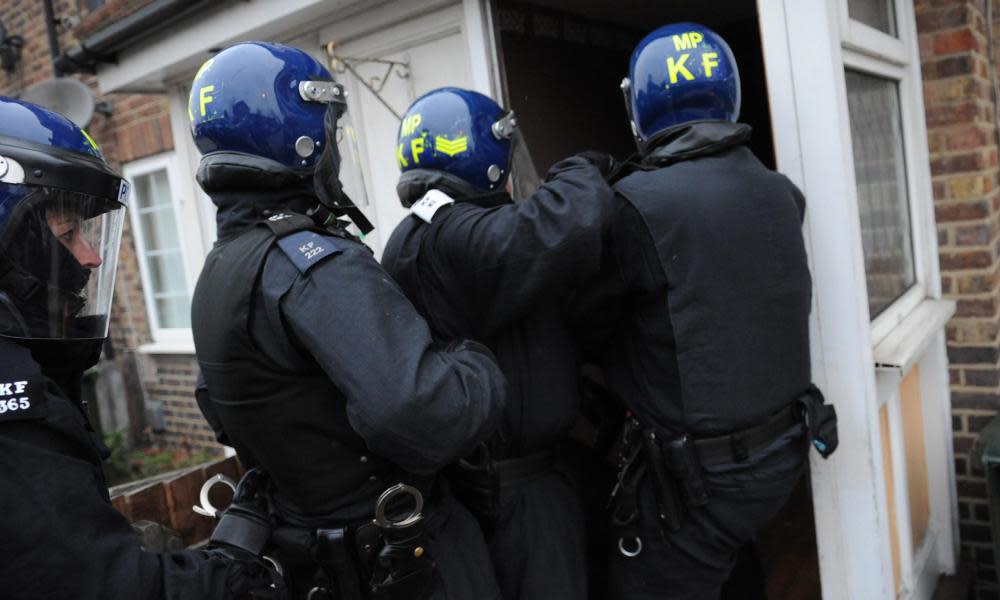Criminals hiding weapons in London playgrounds, say police

Criminals are increasingly stashing weapons in children’s parks – before returning to grab them when they want to use them – to avoid detection from stop-and-search, police have said.
The Metropolitan police, Britain’s biggest force, has vowed to intensify its fight to drive down violent crime as official figures show public confidence in it is falling.
Homicides in the London area the Met serves rose last year while killings in England and Wales fell.
Det Ch Supt Lee Hill, the new head of the violent crime taskforce, said increased stop-and-search could be leading to the hiding of knives in playgrounds.
“It’s difficult to say with any certainty that that is the case, [but] I’ve no doubt that it does play into it,” he said. “Obviously, with the increase in stop-and-search, people come alive to that, that’s the reality of the situation, and we are seeing more weapons being concealed. We do come across them daily.”
He said that over the weekend knives were found in a park in Islington, north London, with later searches finding drugs.
Previous places used to secrete weapons include a trunk of a fallen tree next to a children’s park and boxes holding utility meters on council estates.
Despite intensified efforts, the capital’s homicide rate in 2019 rose to 149, the highest since 2008, while the rest of England had a marked fall.
Assistant commissioner Mark Simmons said the force did not know why but was searching for answers and would commit 200 more officers to tackling violence.
Figures from the mayor’s office for policing and crime, the body responsible for the Met, showed marked falls in key confidence measures.
The percentage of Londoners who know how to contact their local officer fell from 41% in December 2014 to 12% in September 2019, while those who feel they can rely on police to turn up when needed fell from 77% to 71%, and those who feel police do a good job in their local area fell from 67% to 58%.
Violent crime remains the Met’s highest priority and Simmons said the rises and pressures were fuelled by several factors, including changes in the drugs markets leading to violence as dealers sought to protect their business. But also, said Simmons, austerity had impacted on the police and public services that tackle crime and prevent reoffending. “We know over the last few years there has been shrinkage across the public sector, including the police, and many parts of the public sector provide services that either support young people, support families, and intervene with people involved in crime,” he said.
“To draw a direct casual link on any of that is really difficult, certainly my time as chief superintendent in east London in the early noughties, there was a very different picture then around the range of services that were available, than now. I think that is a reality that we’d all accept.”
Simmons said new recruits coming through training, after the Conservatives started to reverse their cuts, would be sent out on to the streets as soon as possible, with the Met believing an increased street presence will deter offenders and reassure the communities they serve.
Simmons said: “We can’t arrest our way out of the current problem.”
There was agreement on the need for other public services to be restored to help fight crime from David Jamieson, the police and crime commissioner for the West Midlands, who said: “While good quality policing is crucial to reducing crime, other services have a big role to play too. We need to see an increase in youth services if the government are serious about tackling the root causes of crime too.”
The Met said it would increase its targeting of the 200 people it suspects are the worst offenders, but also believes some of its efforts are working.
Youngsters under 25 who were stabbed fell from 1,938 in 2018, to 1,776 in 2019, but all knife crime offences rose from 14,680 in 2018 to 15,546 last year.

 Yahoo News
Yahoo News 
